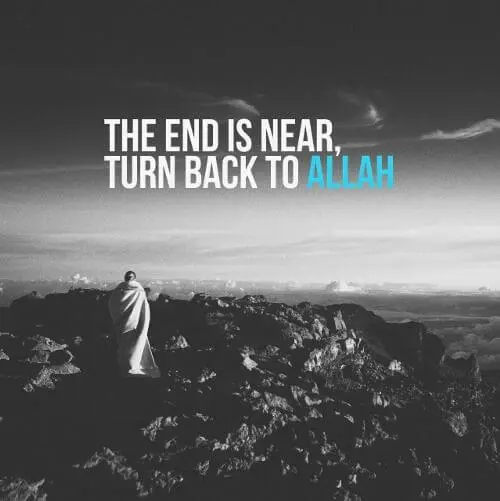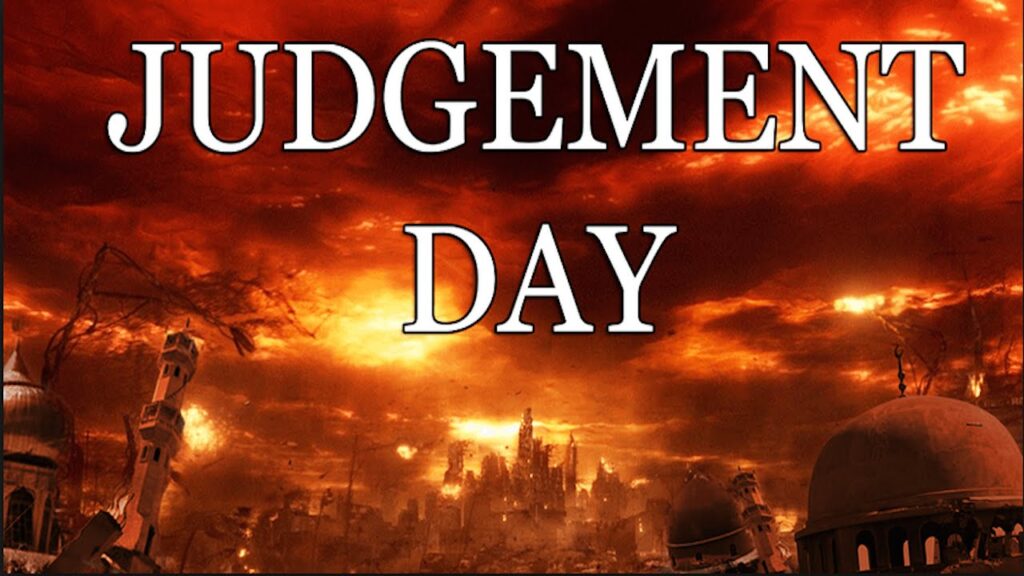the Signs of Judgment Day…Things that happen before the Resurrection show that the Day of Judgment is near, and these are the Signs of Judgment Day. Major and minor indications have been categorized. Read the full article for more information about the Signs of Judgment Day.
the Signs of judgment day
There will be many indications and omens before the Day of Resurrection, and these things will indicate that it is imminent. They’ve been broken up into smaller and larger zodiac signs according to their power.
Most of the less significant indicators will manifest themselves a considerable time before the Resurrection occurs. In some cases, they have already occurred, and in others, they have appeared and are continuing; in others, they have not yet occurred, but they will, as the Prophet (peace and blessings from Allah be upon him) has predicted them to happen.
It is just a question of time until the great Day of Resurrection arrives when the significant indicators manifest, which will be a sure clue that it is getting close.
Many sahih ahadith describe the Hour’s minor indicators. Thus it’s difficult to include them all here. Because there isn’t enough place to include the ahadith in this post, we’ll just list them. Supporting individuals who want to learn more about this issue and the evidence for these indications, we’ll give links to trustworthy literature on the subject. Shaykh ‘Umar Sulayman al-al-Qiyamah Ashqar’s al-Sughra and Shaykh Yusuf al-Ashrat Wabil’s al-Sa’ah (The Minor Resurrection), both published by the International Islamic Publishing House in Riyadh, Saudi Arabia.

Minor the Signs of judgment day
The following are the minor the Signs of judgment day:
1. The Prophet’s dispatch (peace and blessings of Allah be upon him).
2. The Prophet’s demise (peace and blessings of Allah be upon him).
3. Jerusalem’s capture.
4. The ‘Amwas (Emmaus) epidemic named after a city in Palestine.
5. Affluence and a lack of need for charity.
6. Fitan’s appearance (tribulations). Among the early years of Islam’s hardships were the assassination of ‘Uthman (may Allah be pleased with him), the fight of the camel and the battle of Siffin, the rise of the Khawarij, the battle of al-Harrah, and the belief that the Quran is a creation.
7. The rise of prophetic claimants, such as Musaylimah and al-Aswad al-‘Anasi.
The arrival of fire in the Hijaz occurred in 654 AH in the middle of the seventh century AH. Al-Nawawi said a fire broke out in Madinah in 654 CE. It was a massive fire on the eastern side of Madinah, beyond the Harrah, and 8.word of it traveled across Syria and the world.
9. Decreased trust. One of the indications of a lack of confidence is the entrusting of people’s concerns to individuals who are not competent.
10. The erasure of knowledge and the spread of ignorance; the erasure of knowledge will come with the demise of the academics, as al-Sahihayn states.
11. Zina’s spread (adultery, fornication)
12. Riba’s spread (usury, interest)
13 The ubiquity of musical instruments.
14. Widespread alcohol consumption.
15.Shepherds are vying for positions in the construction of towering structures.
16.As reported in al-Sahihayn, a slave woman gave birth to her mistress. However, scholars have different interpretations of what this signifies. According to Ibn Hajar, widespread disobedience among children would result in a youngster treating his mother like a master treats his slave woman with neglect and insults.
17. Widespread assassination.
18. Seismic activity on a large scale.
19. Landslides, changes, and stones from heaven manifest.
20. Appearance of dressed but nude ladies.
21. The fulfillment of a believer’s dreams.
22. Widespread perjury and concealing of factual testimony.
23. A significant proportion of females.
24. The Arabs’ territory reverts to meadows and rivers.
25. The Euphrates will reveal a gold mountain.
26. Wild creatures and inanimate items will communicate with humans.
27. The “Romans” will grow in numerous and wage war against the Muslims.
Constantinople’s conquest.
Major the Signs of judgment day
The the Signs of judgment day are those described by the Prophet (peace and blessings of Allah be upon him) in the hadith of Hudhayfah ibn Acid, and they consist of 10 signs:
1. the Dajjal; 2. the descent of ‘Isa ibn Maryam (Jesus son of Mary); 3. Yajuj and Majuj (Gog and Magog); 4. There are three landslides, one east, and one west.
6. and one in the Arabian Peninsula; 7. the smoke; 8. the sun rising from its setting position; 9. the Beast; and 10. the fire that will drive the people to their meeting location.
These indicators will emerge sequentially, and after the first appears, the others will follow shortly after that.
According to Muslim, Hudhayfah ibn Asid al-Ghifari (may Allah be pleased with him) stated: “The Prophet (peace and blessings of Allah be upon him) came out to us while we were debating.” “What are you discussing?” he inquired. “We are discussing the Hour,” they said. “It will never begin unless you see ten symptoms before it,” he said. He mentioned the smoke, the Dajjal, the Beast, the sun rising from its setting position, the descent of ‘Isa ibn Maryam (peace and blessings of Allah be upon him), Yajuj and Majuj, and three landslides, one in the east, one in the west, and one in the Arabian Peninsula, as well as a fire that will emerge from Yemen and drive the people to their gathering place.
Order of the Signs of judgment day
There is no sahih scripture that specifies the sequence in which these signs would appear; instead, the order of some of them must be interpreted in light of the context of the passages.
Shaykh Muhammad al-Salih al-‘Uthaymin was asked:
Will the major portents of the Hour occur in a certain order?
“The sequence of some of the key portents is known, but the order of others is unknown,” he responded. Among those whose sequence is known are the descent of ‘Isa ibn Maryam, the appearance of Yajuj and Majuj, and the Dajjal, because the Dajjal will be sent, followed by the descent of ‘Isa ibn Maryam and the emergence of Yajuj and Majuj.
Al-Safarini (may Allah have compassion on him) stated the sequence of these portents in his ‘Aqidah, although part of the sequence is acceptable, while others are not. However, what important is that there are significant signals of the Hour, and when they occur, the Hour has approached. Allah has ordained portents of the Hour, since this is a significant event, and the public needs to be informed when it is about to occur.” (Majmu’ al-Fatawa, section 2, question 137)



